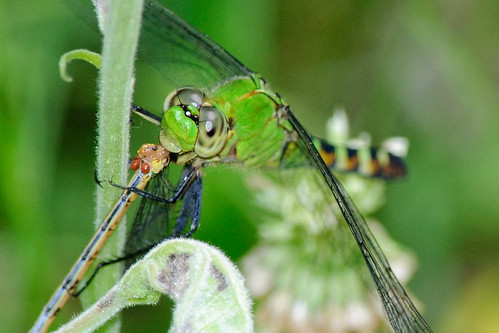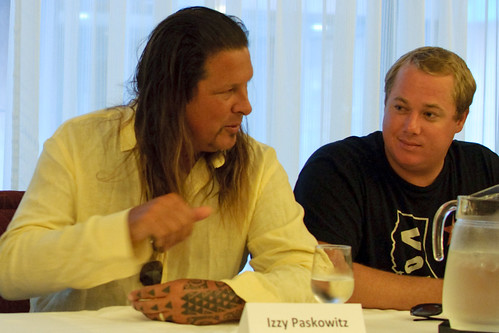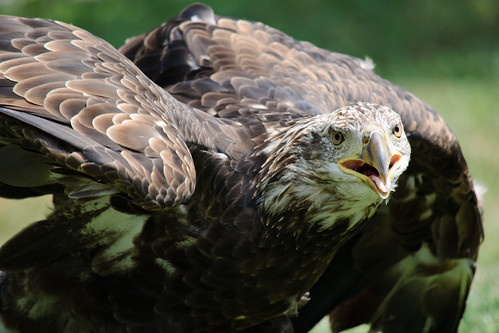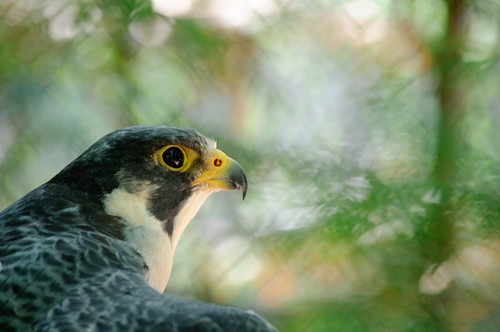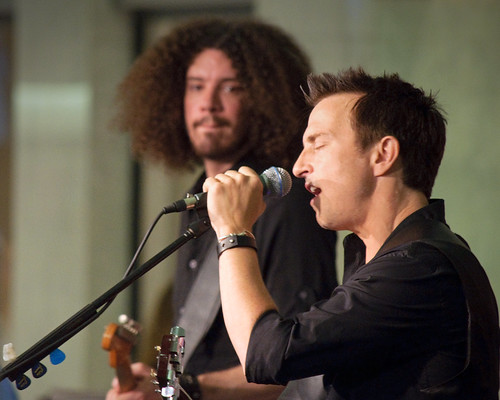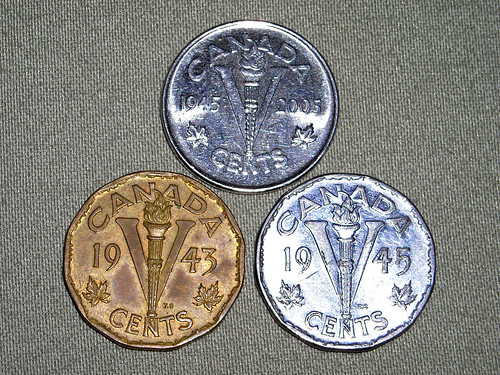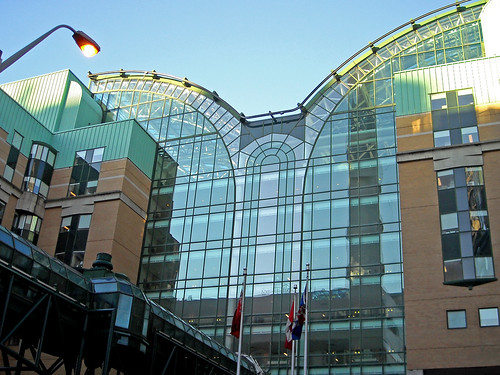I’ve been chasing dragonflies again, up at the cottage, and have been obsessively trying to identify all of the species. Blame my scientific training, I say. And, as you might imagine, this is not going terribly well, because I’m a molecular biologist, not an entomologist, and I didn’t take any DNA samples.
Readers who are familiar with Grrlscientist’s blog and her regular “Mystery Bird” feature, know that identifying different species, even ones we think we’re familiar with, can be very tricky indeed. In this part of North America, birdwatchers mutter darkly about the five nearly-indistinguishable species of Empidonax Flycatchers – Acadian, Yellow-Bellied, Least, Willow, and Alder – or the various and assorted “Peep” sandpipers, which I won’t bother to list for you. If you’re interested, this guide from the American Birding Association will give you some idea of the problem. Even the lowly Mourning Dove has a habit of looking like other birds, as Joey Slinger points out in his excellent Down and Dirty Birding. And it doesn’t end there – my edition of the classic Peterson Field Guide to Eastern Birds contains four dense pages, amusingly labeled “Confusing Fall Warblers, etc.”, which will drive you completely mad if you look at them for too long.
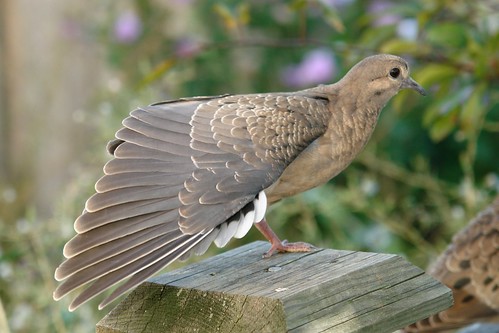
A Mourning Dove, pretending to be an umbrella.
But all this pales compared with insects.
Really hard bird identifications are, for the most part, not the norm, although I’ll readily concede that the difficult ones can be every bit as impossible as any fly, wasp or bug. Insects, however… well, that can be a different story. And dragonflies, compared with all manner of other creepy-crawlies, are actually comparatively easy, for the most part, with “only” 172 species recorded in the Province of Ontario. A much easier number to deal with than, say, beetles, or flies. Nevertheless, for the non-expert (and I most assuredly am not one), identifying these creatures can sometimes be very, very challenging indeed.

This one is probably a Canada Darner – but maybe not.
Once in a while, I’m even accompanied by a friend who is a real, live, card-carrying entomologist from the Royal Ontario Museum, who, although originally an expert in parasitic wasps, spends a lot of her time identifying insects from in and around the Greater Toronto Area and other parts of southeastern Ontario. Despite having access to her expertise, a copy of the excellent Dragonflies Through Binoculars, and the entire internet at my disposal, the ID of this one eluded me for quite a while:
Turns out it’s a female Eastern Pondhawk, demonstrating one of the confusing issues – sexual dimorphism, with females this gorgeous bright green, whereas males are blue. Believe it or not, few of the sources I consulted had photographs of both genders. I’m not even going to attempt to identify the unfortunate Damselfly it’s eating. Half a dozen photos later, it was completely gone.
Here’s another – the female Common Whitetail. Note the complete and utter absence of a white tail, which is blindingly obvious in the adult male:
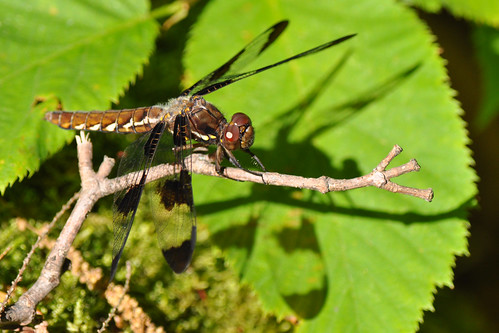
No white tail, and twelve wing spots. Males have a white tail and eight spots.
Now, I don’t consider myself to be particularly bad at this. The trouble is that dragonflies are really variable, much more than you might expect. I’ve come up with four major issues that make this tricky:
1) They can vary regionally, so that the same species in one familiar location might be a lot darker, or a lot lighter, somewhere else. This will drive you nuts if you don’t know about it, and maybe even if you do. The devilishly complicated Sympetrum Meadowhawks provide a fine example (see Meadowhawks will make you crazy for an amusing introduction). For added fun, sometimes the names vary, too – that Common Whitetail is also known as the Long-Tailed Skimmer, for example.
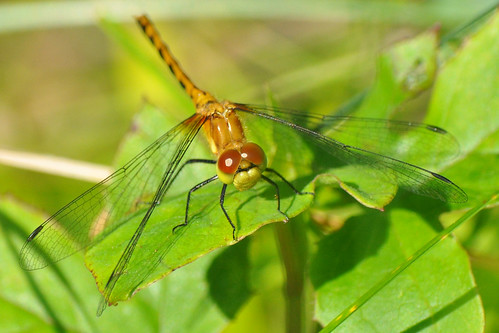
A Meadowhawk. Do you know the species? Yeah, neither do I.
2) As we saw above, females and males can look really, really different, making it very hard to identify one, if all that you have is a picture of the opposite gender. On the other hand, sometimes they look identical, which helps with the species, but makes telling the males and females apart impossible except by behaviour, or a much closer anatomical examination than is possible with a camera.
3) Immature individuals can look quite different from adults – sometimes just enough to trick you into thinking that they’re something else. Immature male Common Whitetails have the same non-white tail as females, but the wing spots of a male.
4) Sometimes, they can vary in colour, even in the same location. Those Canada Darners can sometimes look like Green-Striped Darners. This will also drive you nuts.
What’s perhaps even more surprising is that, even though there are comparatively few species, and Dragonflies and their kin are large and showy, nevertheless there are few really comprehensive, online field guides. Although our Ministry of Natural Resources does a valiant job, there are still just not enough online images collected in an expertly-reviewed collection to safely navigate me through issues 1 through 4, above.

It’s even worse when they’re not sitting still.
So what’s a casual nature observer to do? We can’t all be experts at everything, and it seems that sometimes even the experts are overwhelmed to the point at which regular folks are doomed. But that, in a perverse way, is part of the fun – because finally nailing an ID can be very satisfying, at least until someone comes along and tells me that I’m wrong.

